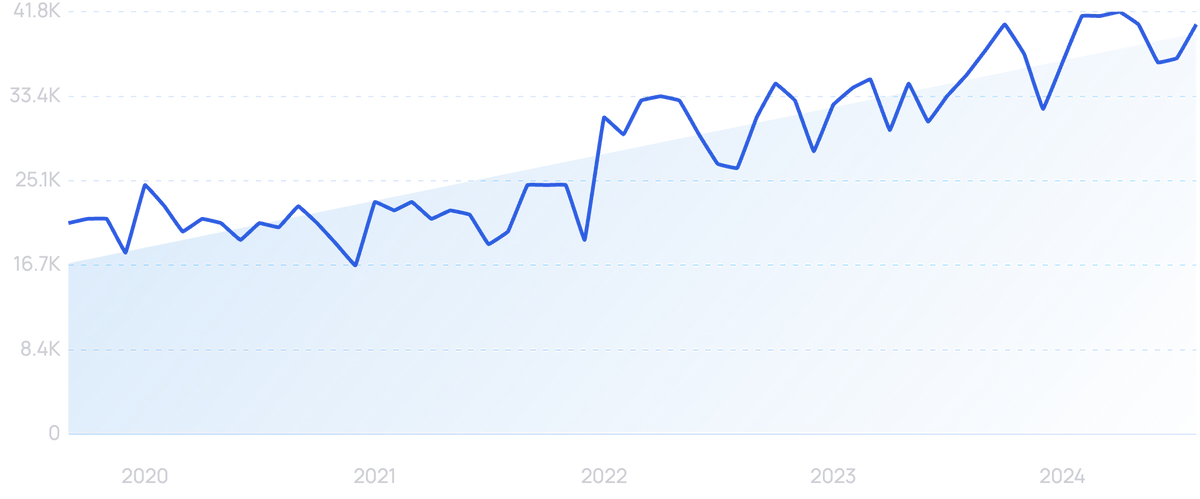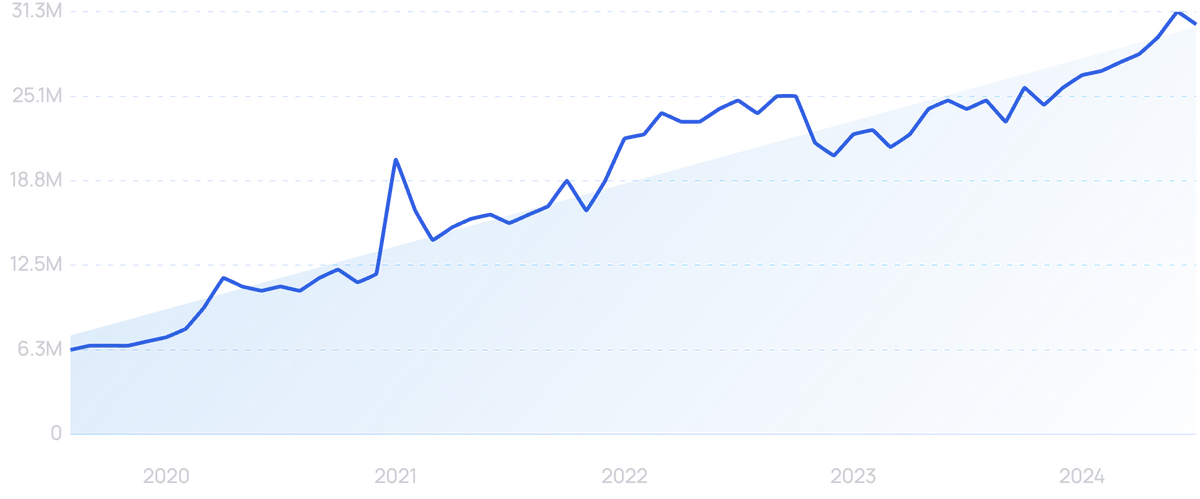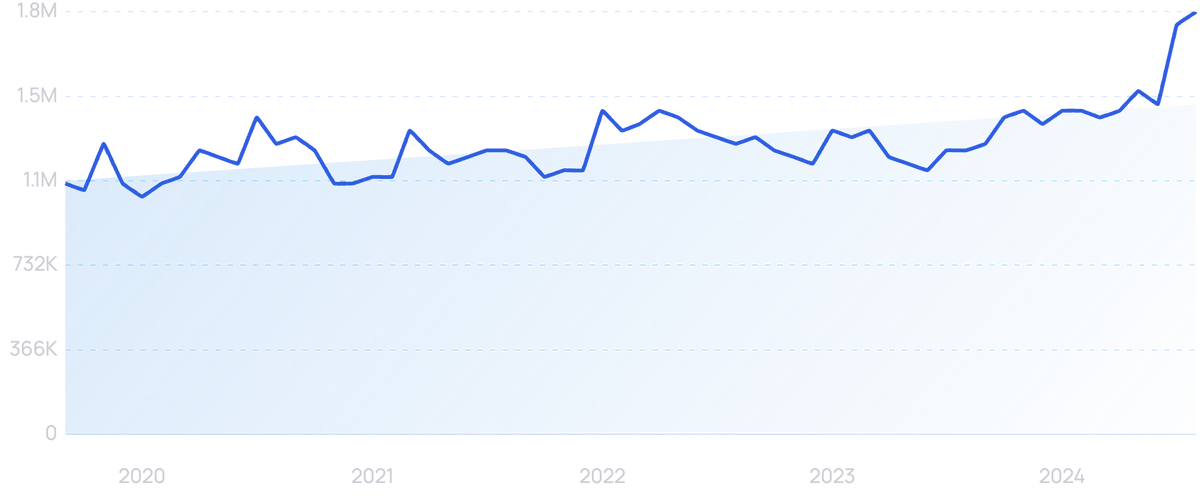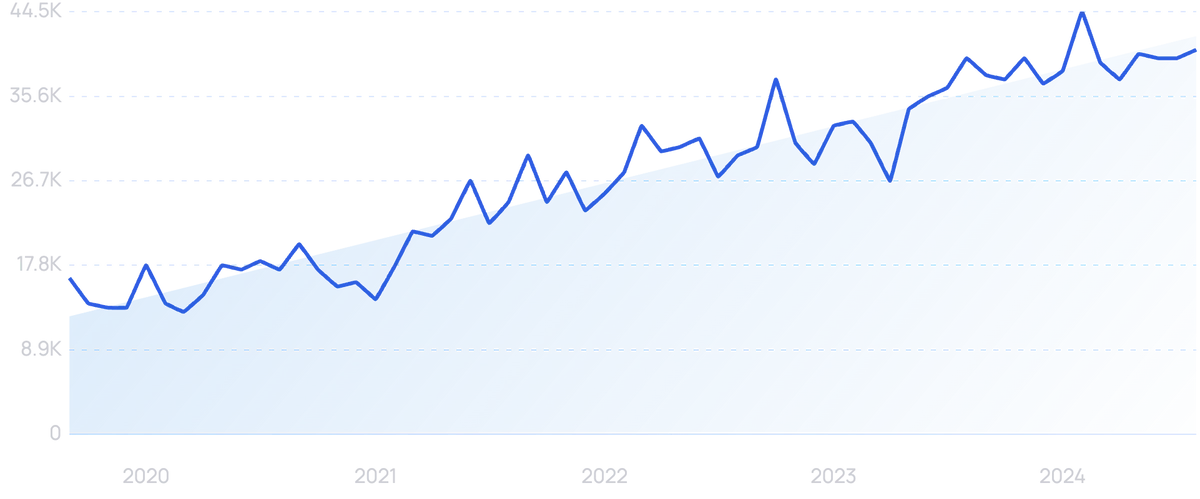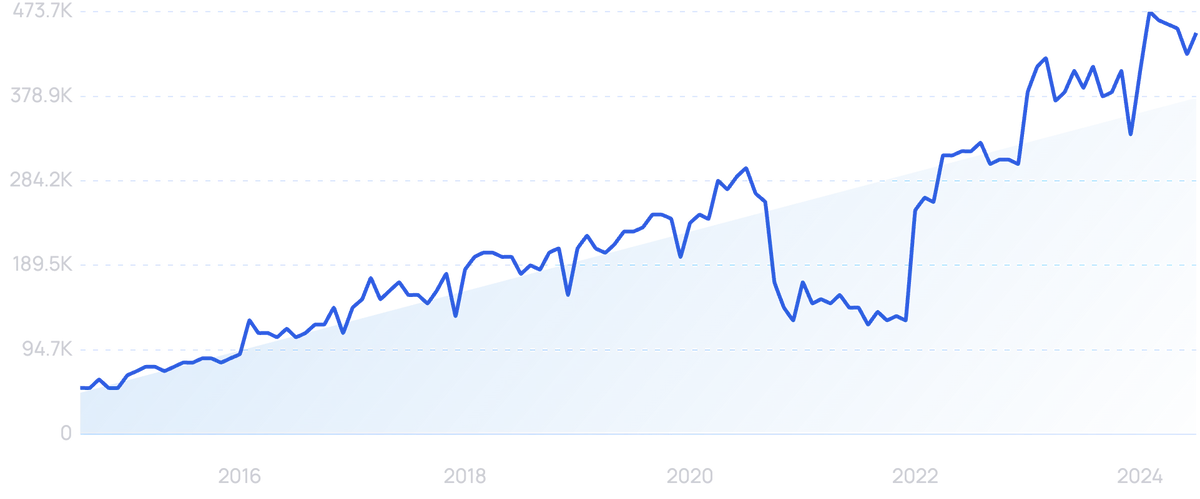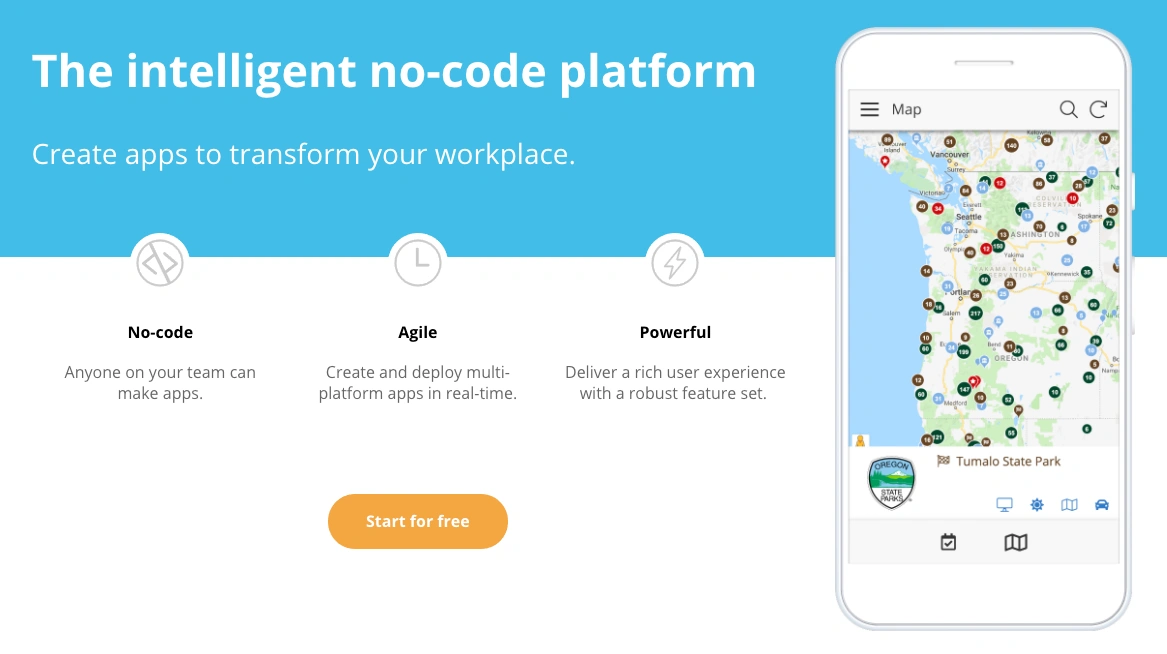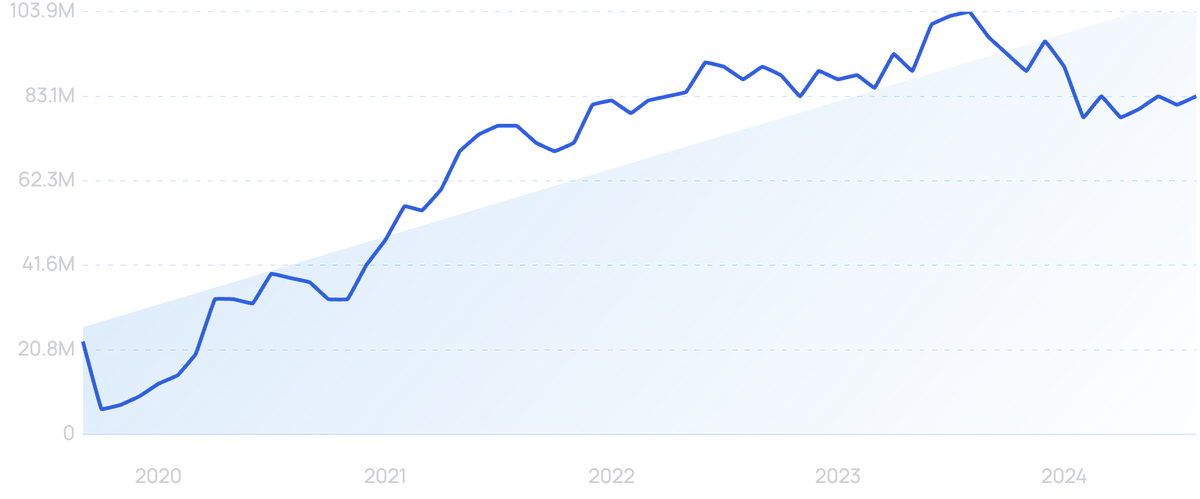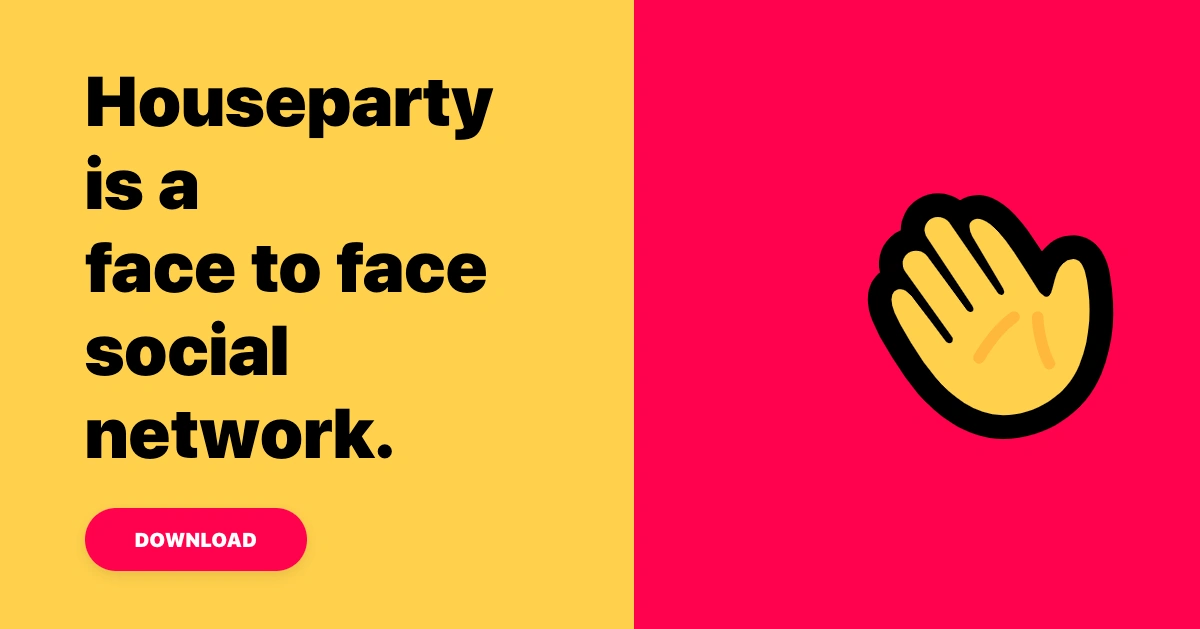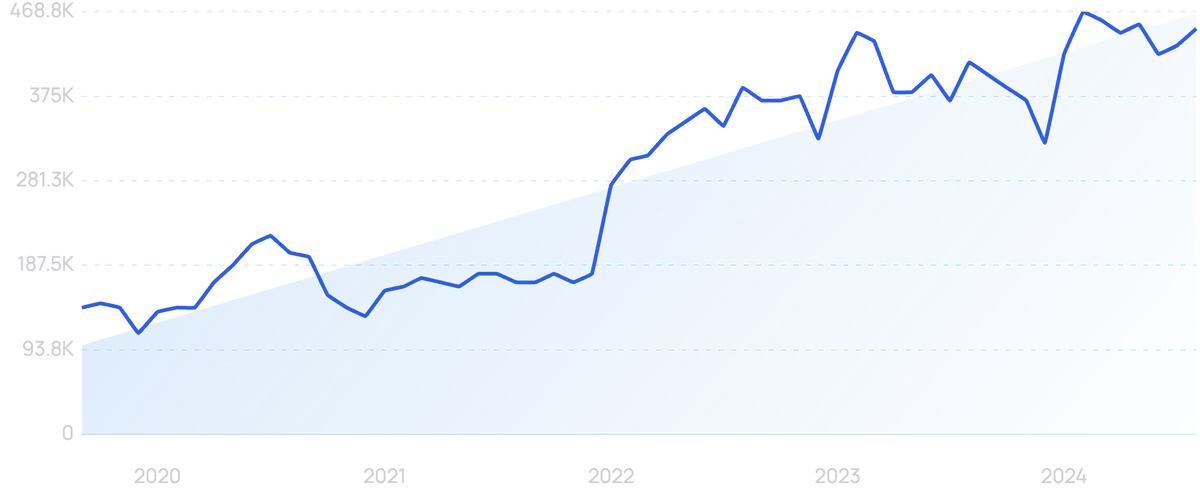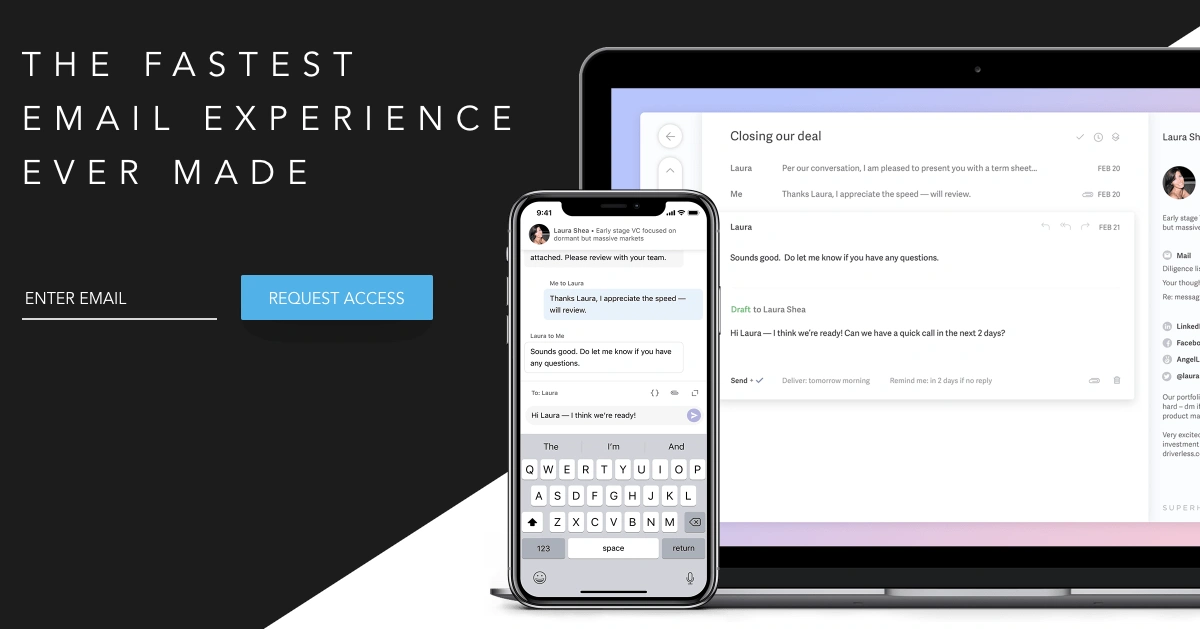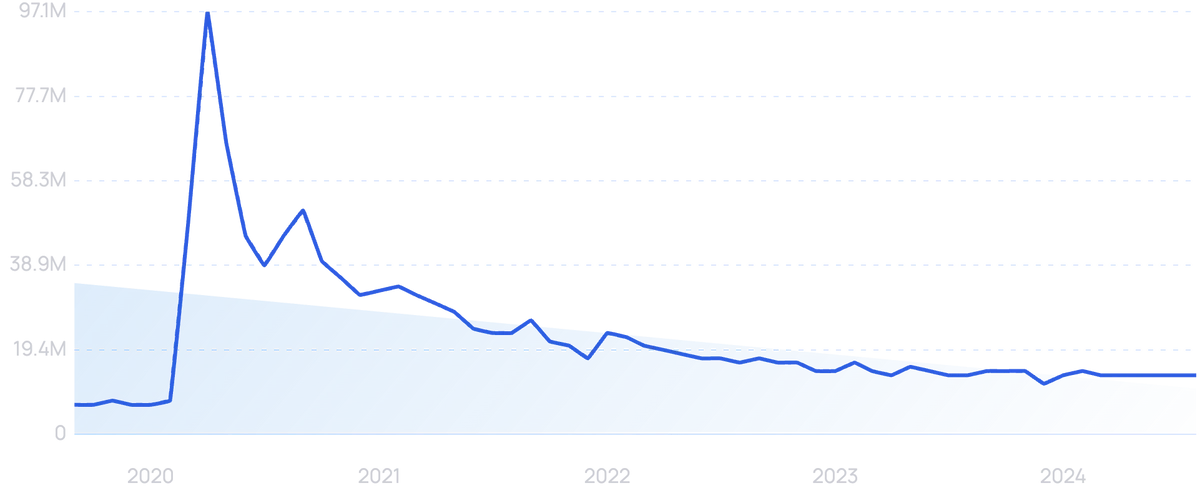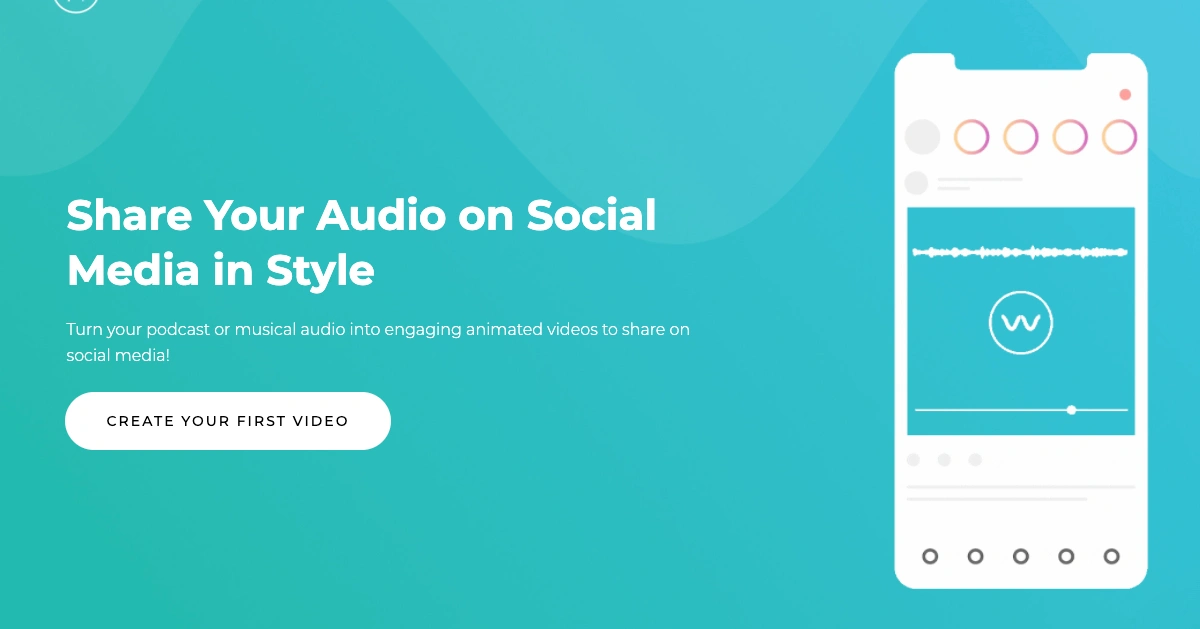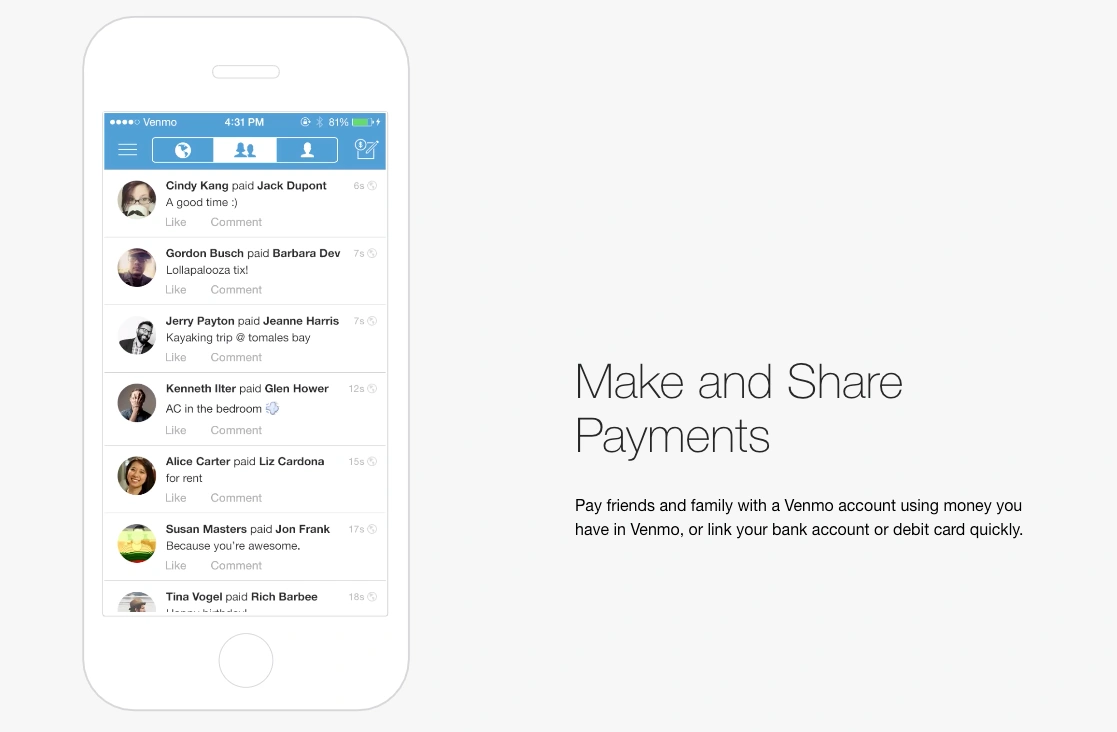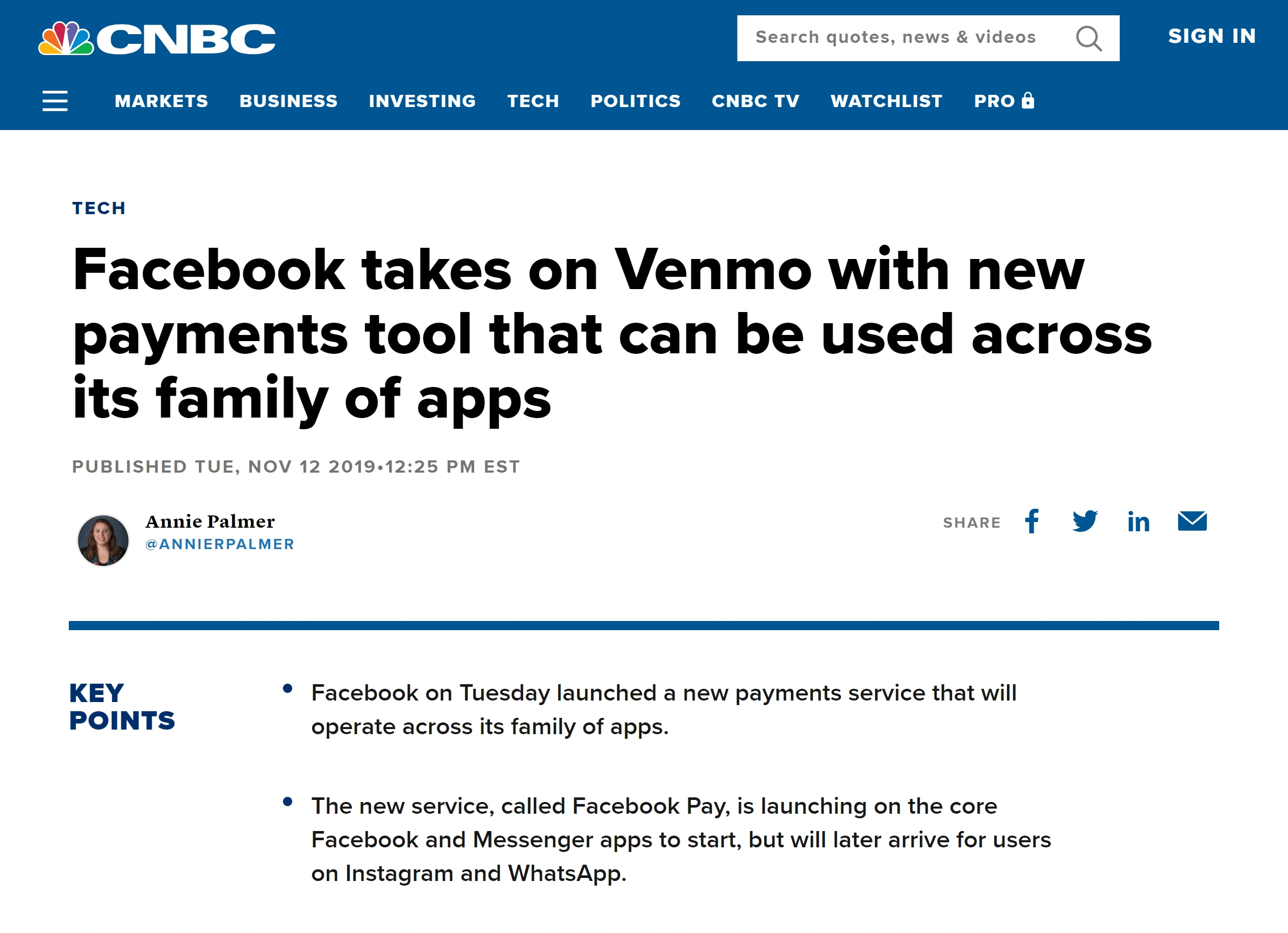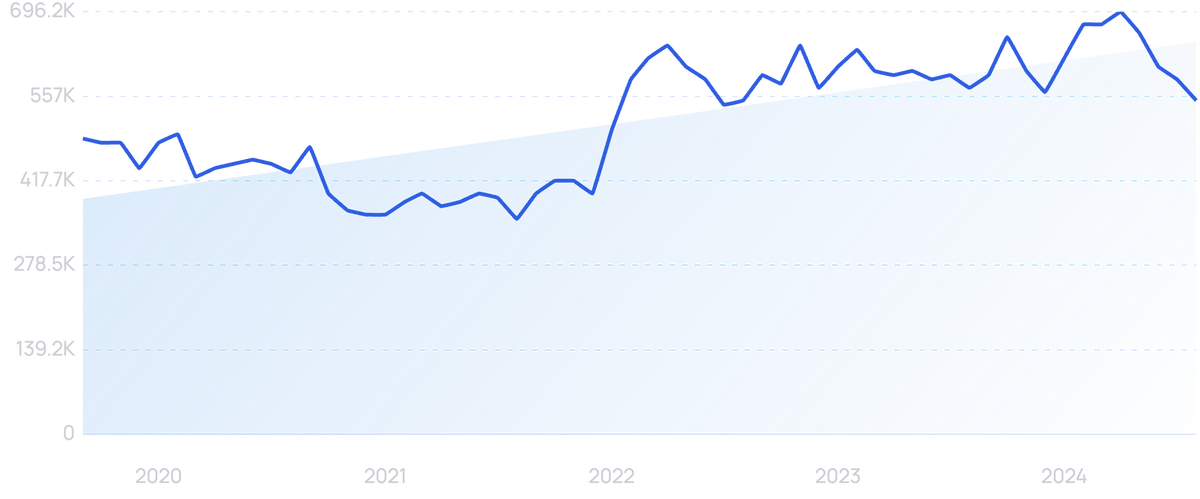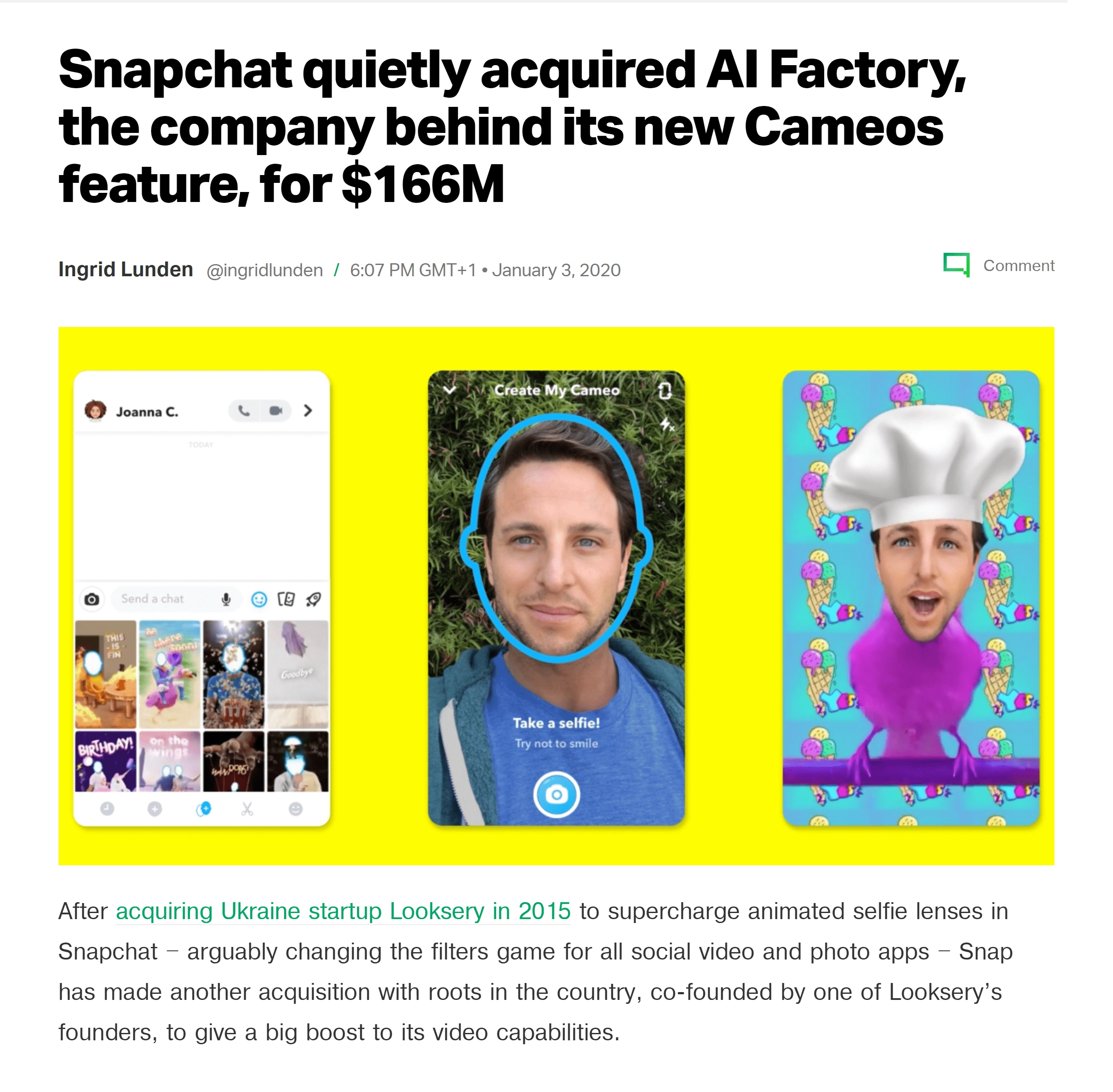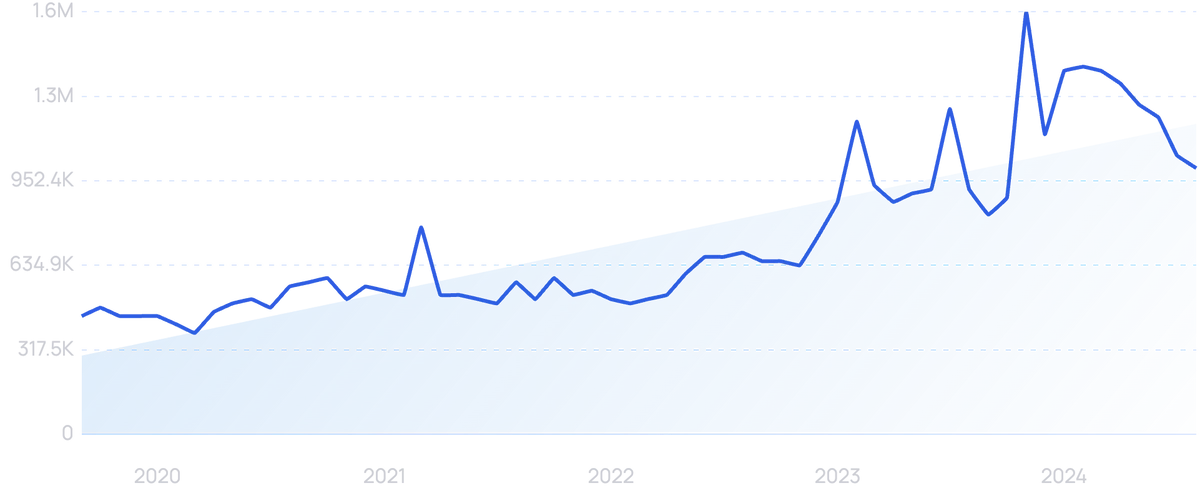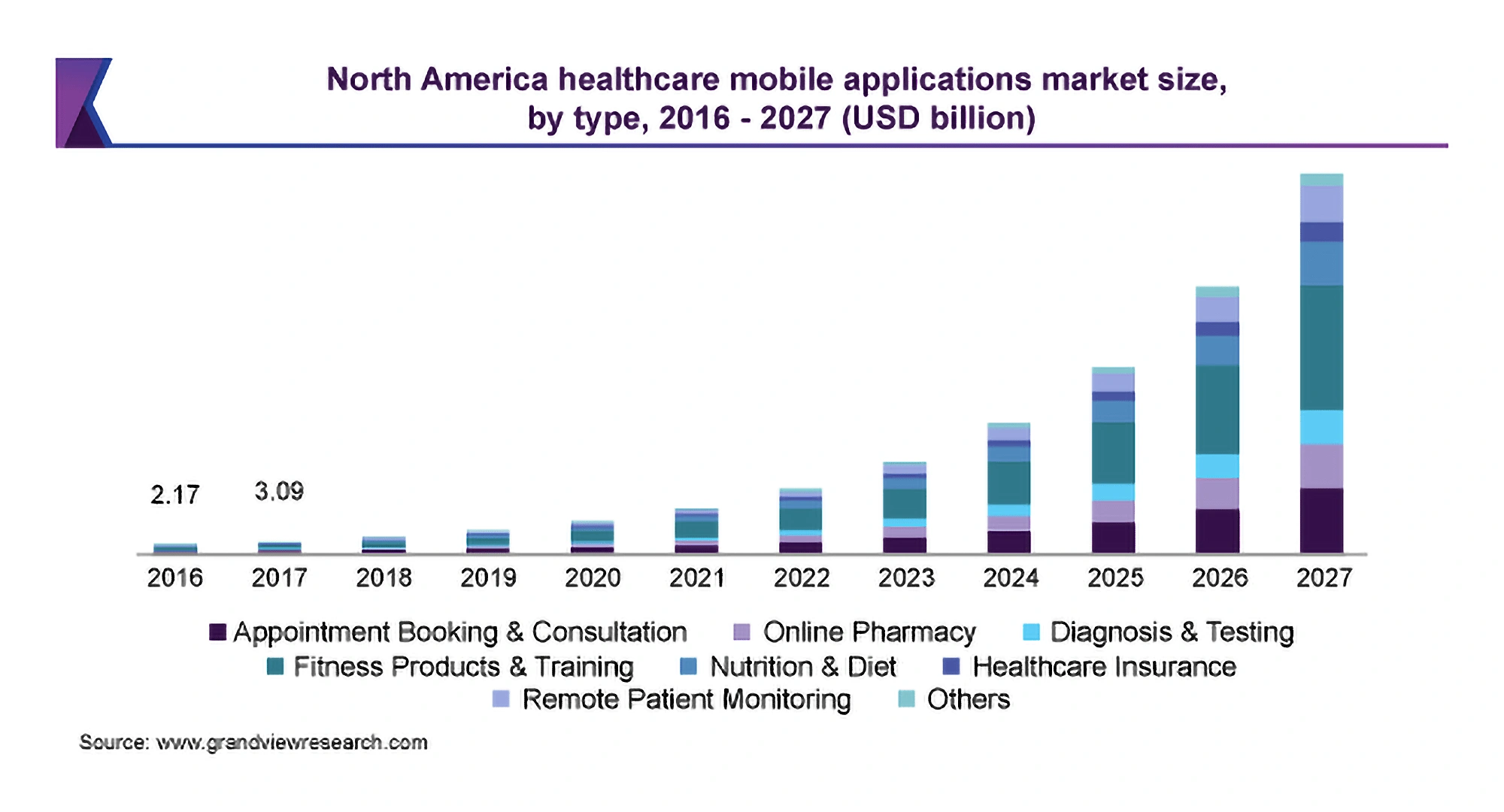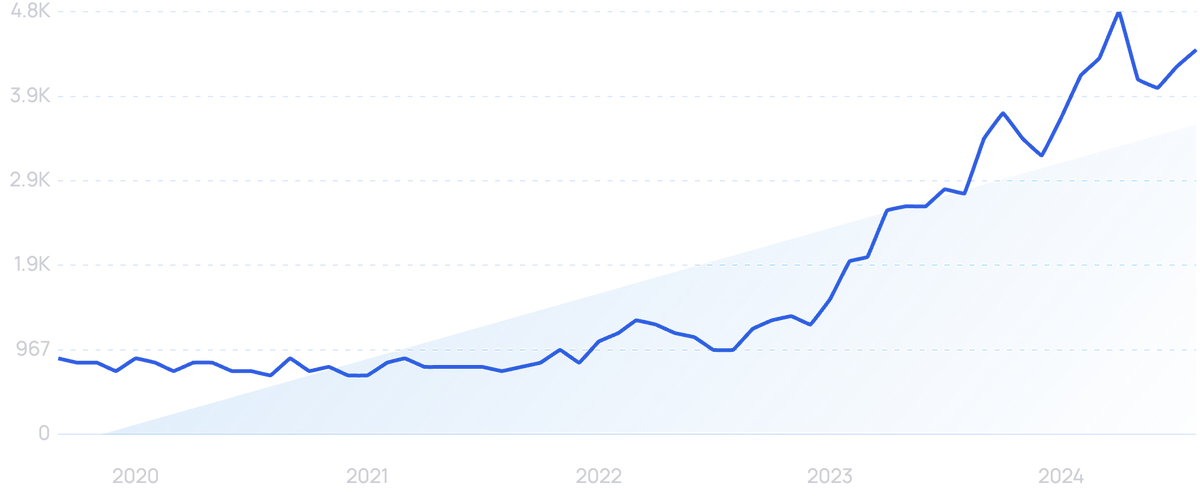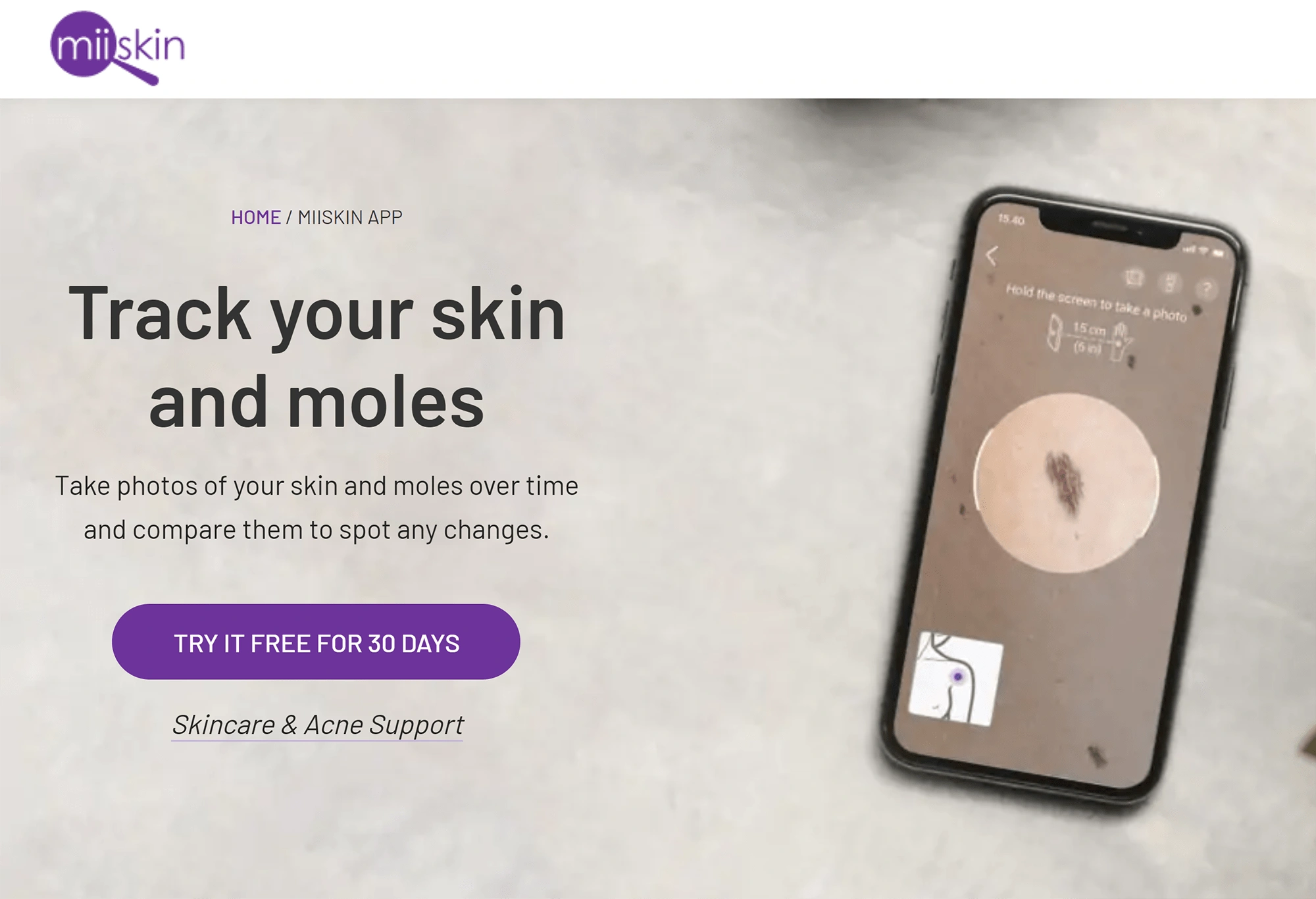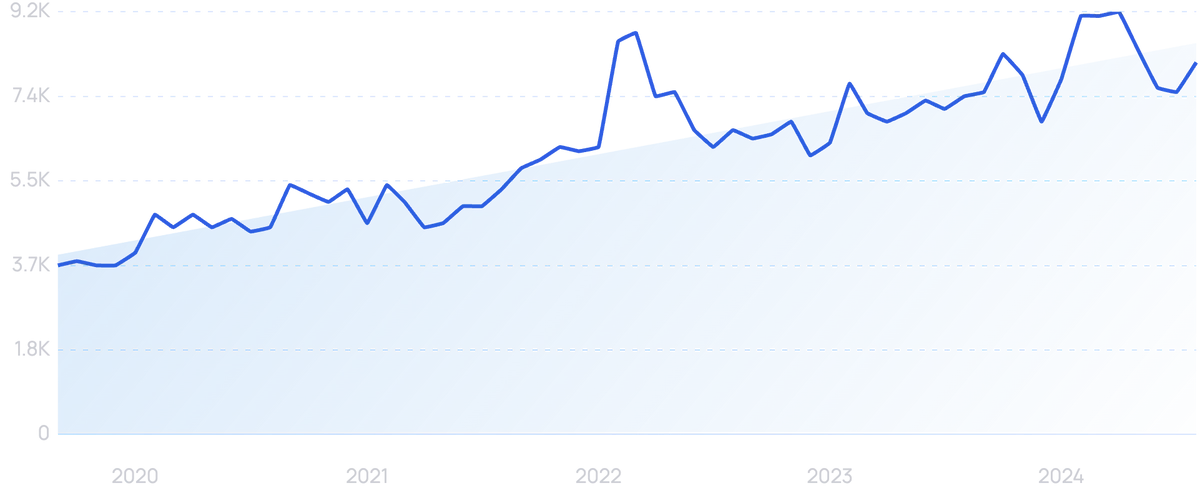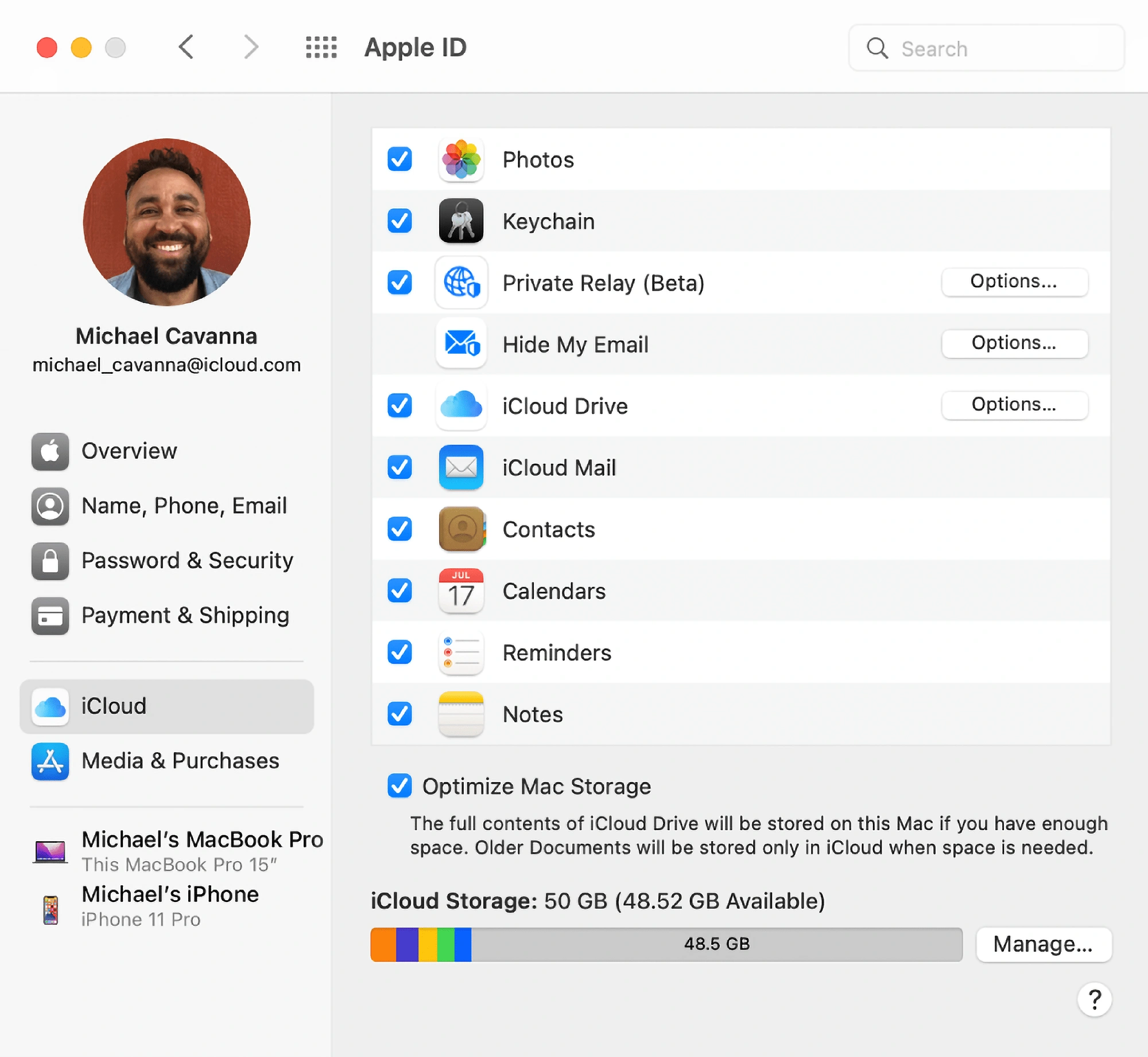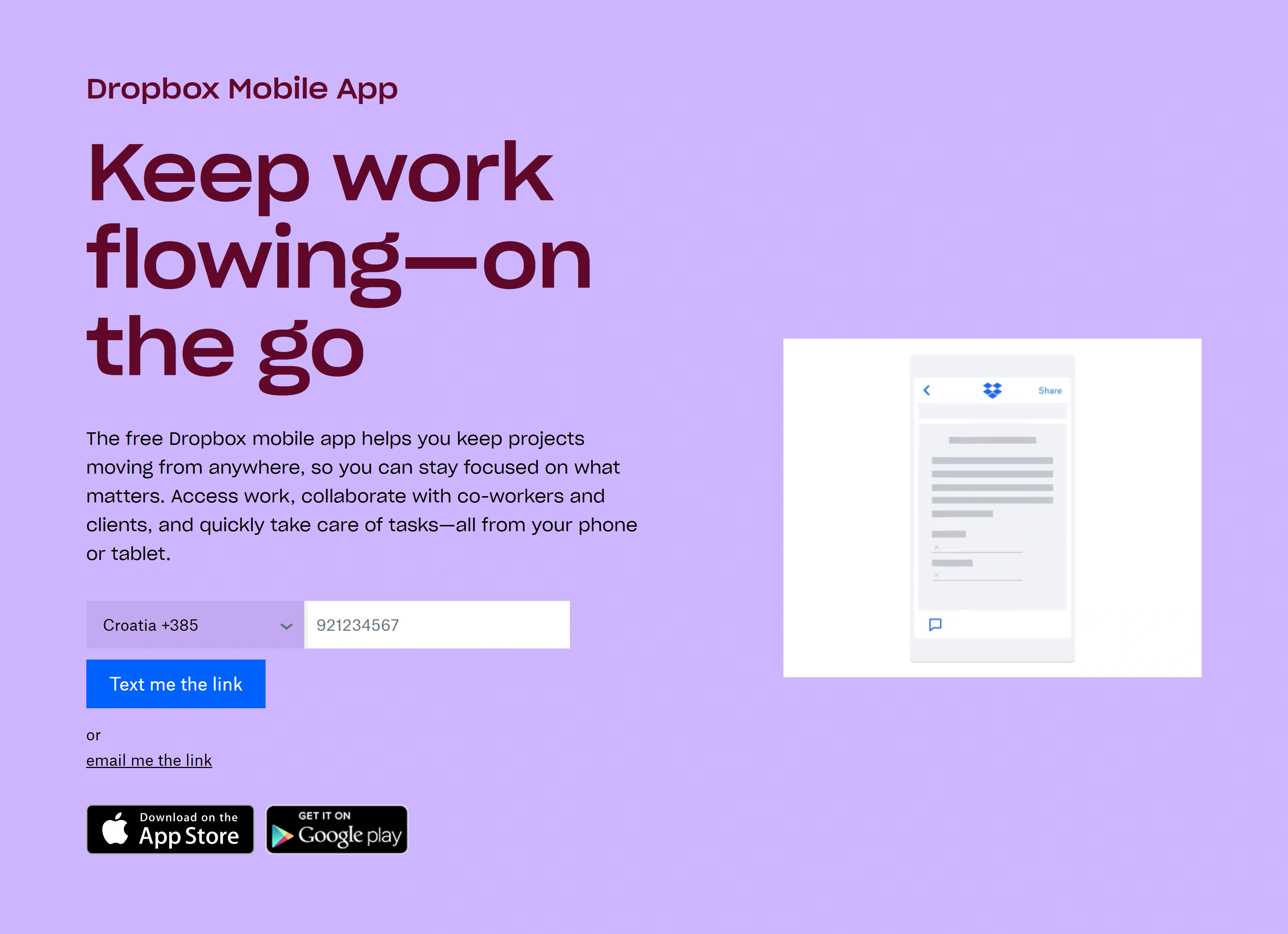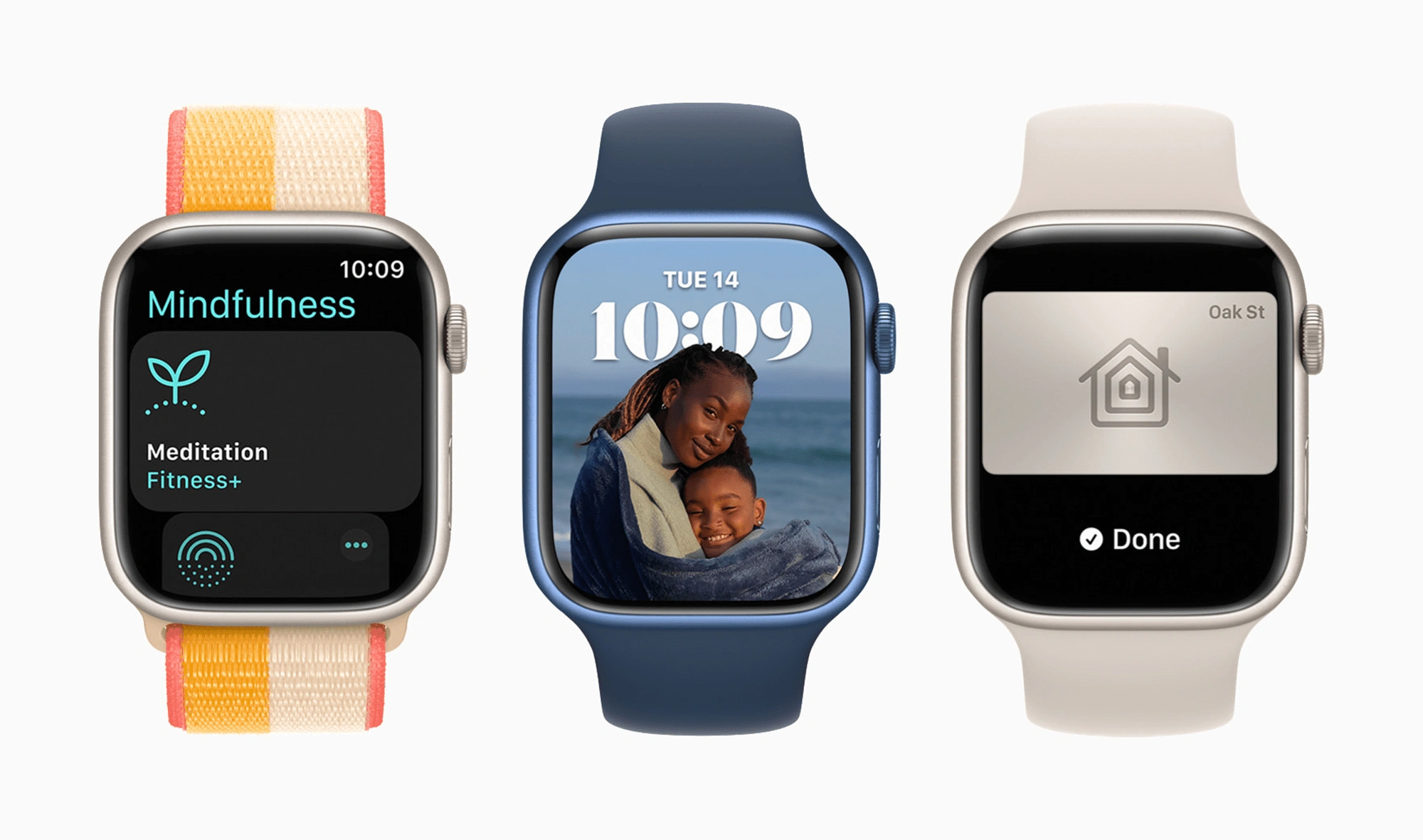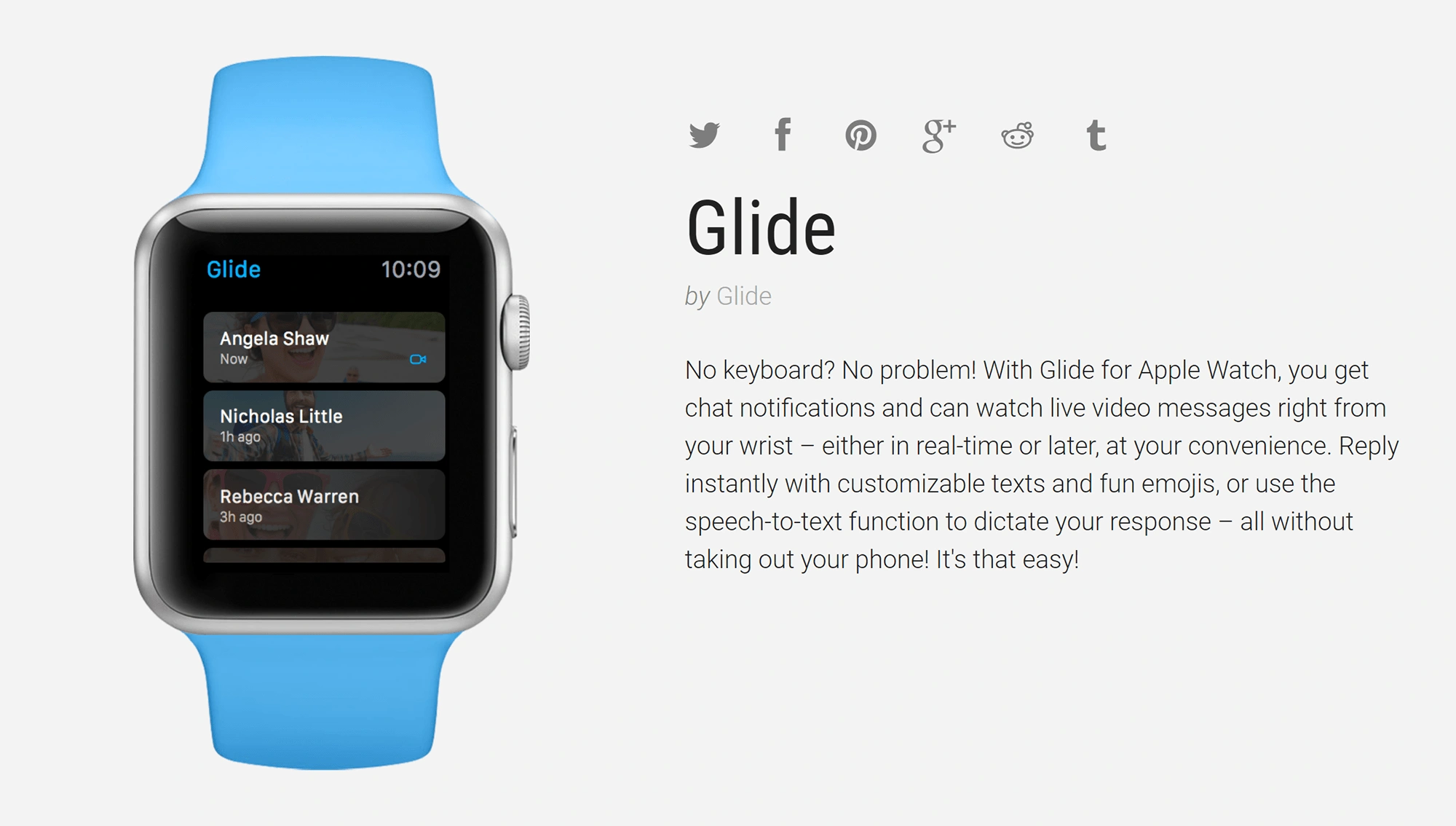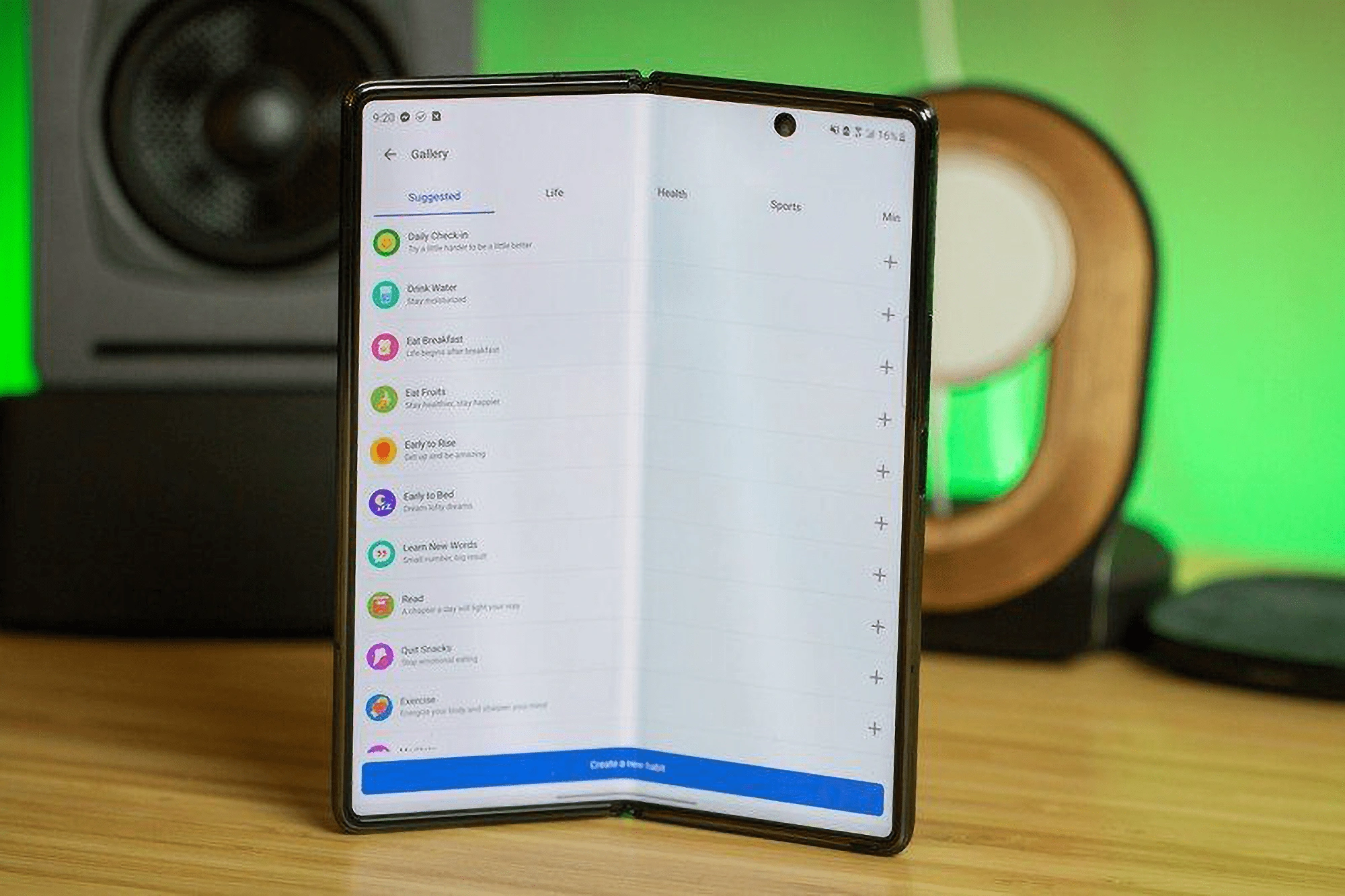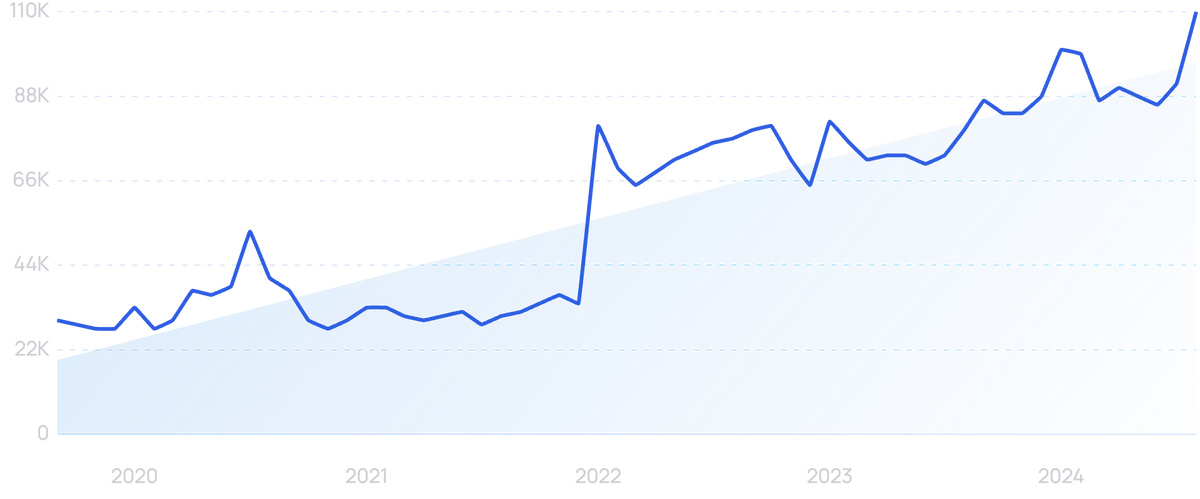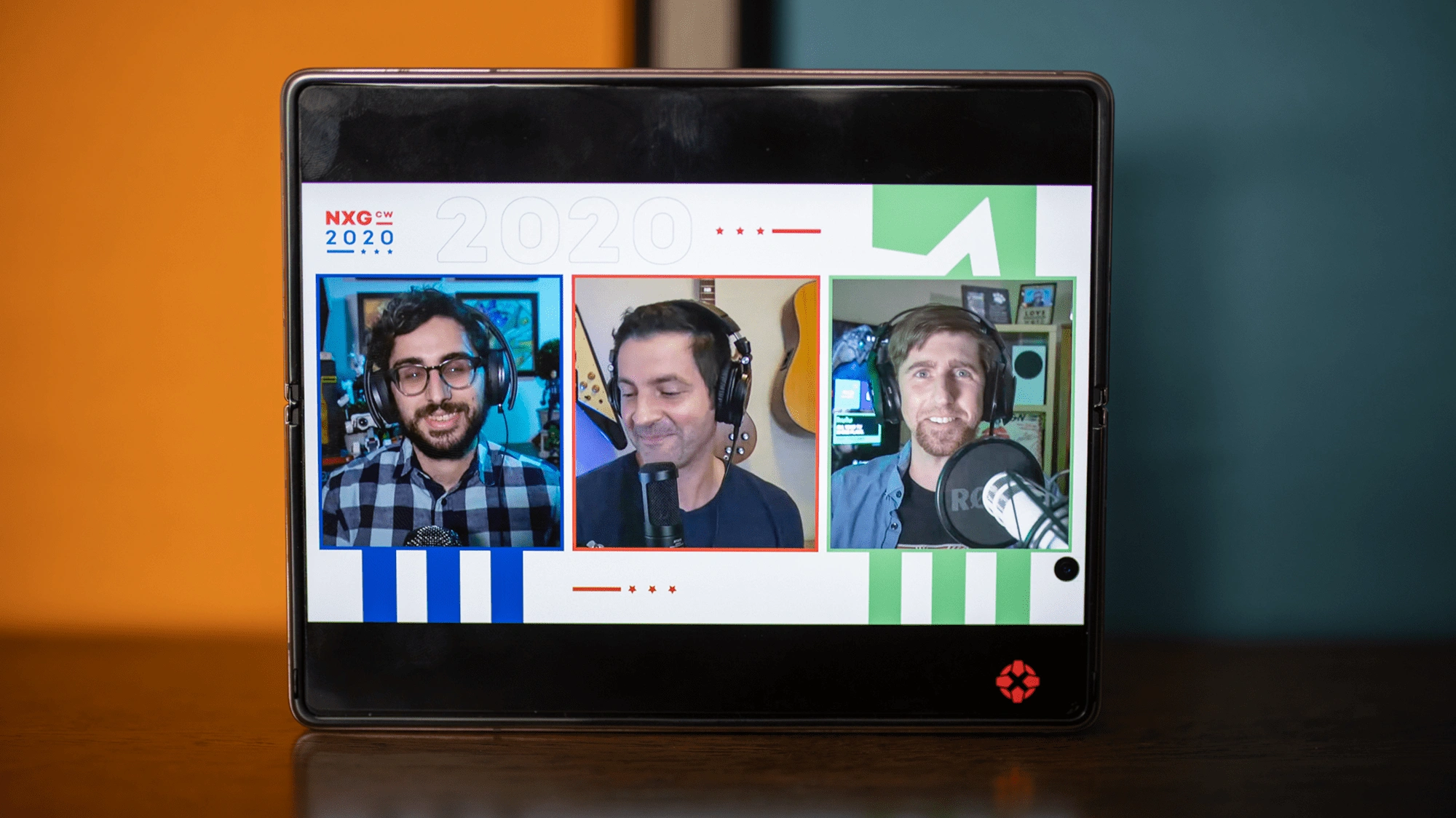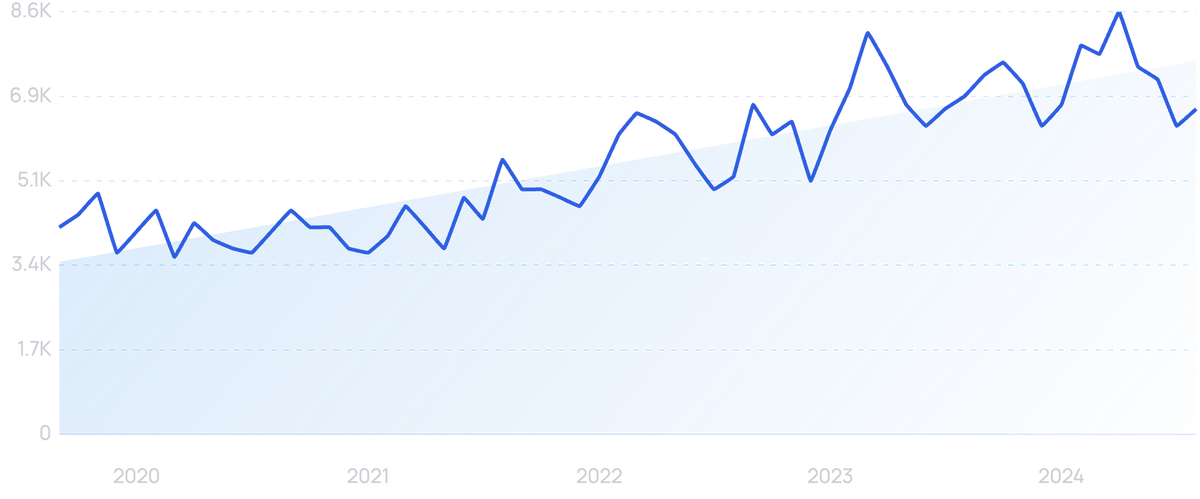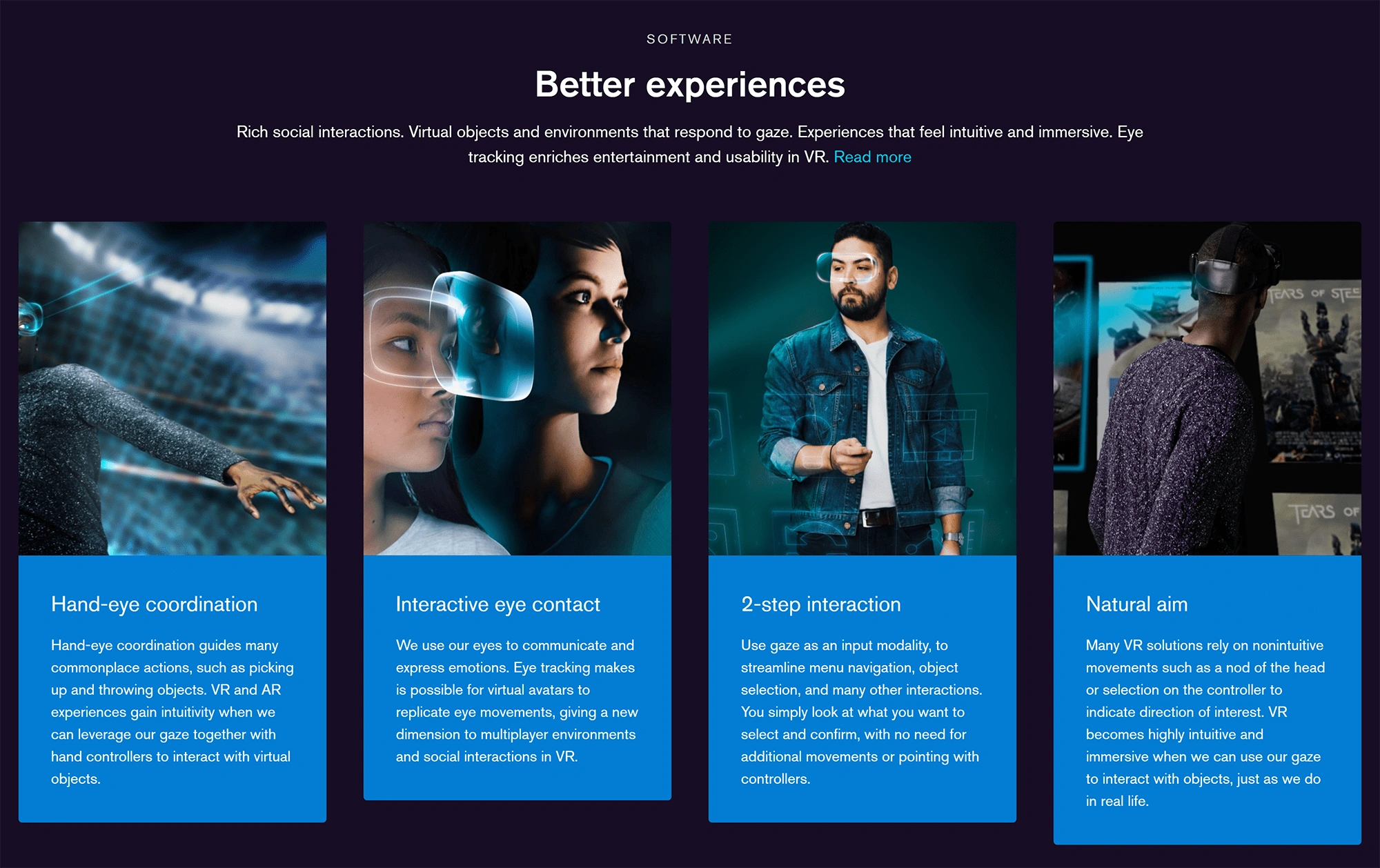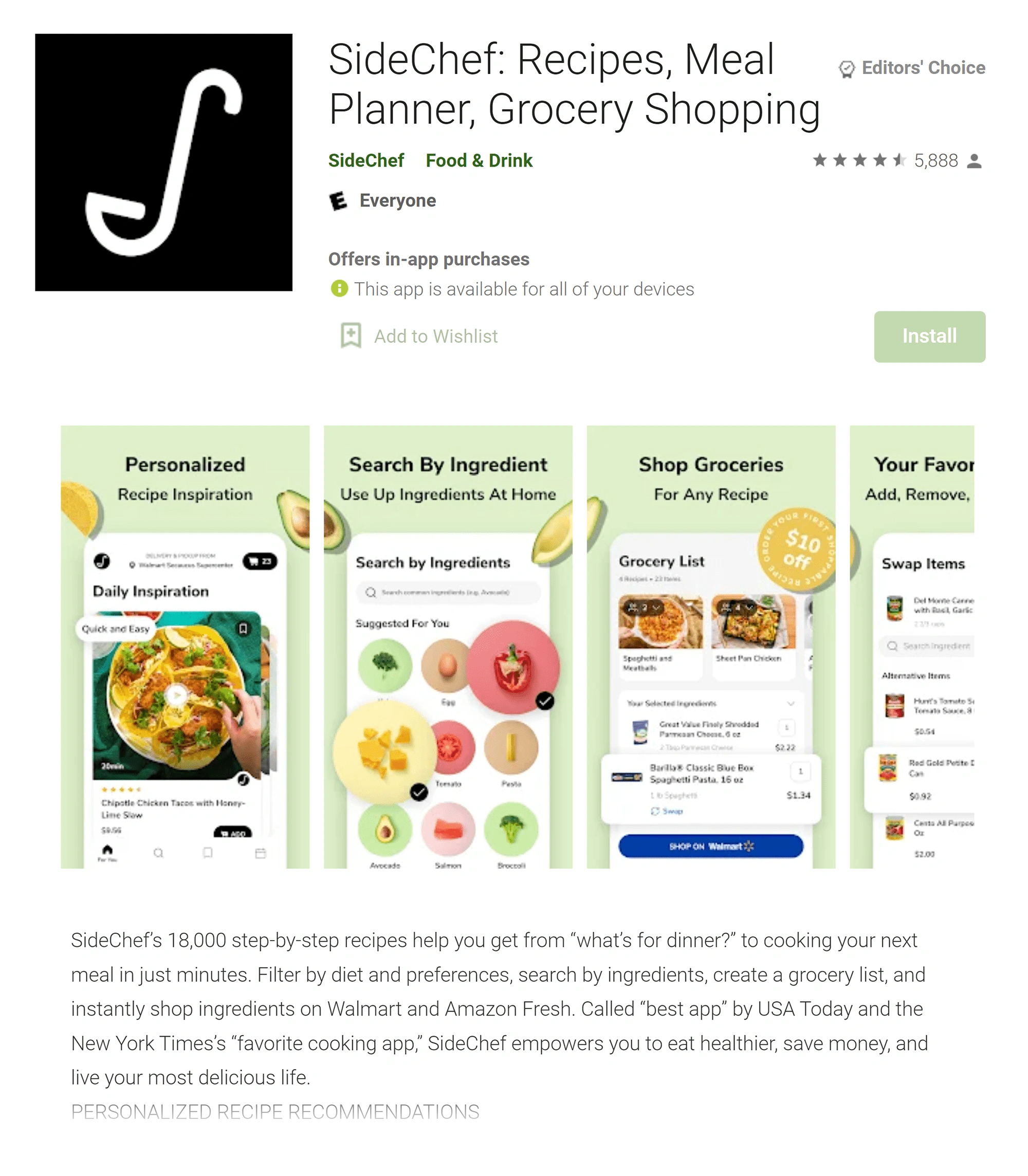
14 Mobile App Development Trends (2024)
You may also like:
Global mobile app revenue is worth an estimated $437.8 billion.
And is set to grow to reach $781.7 billion in 2029 at a CAGR of 7.84%.
With all that potential revenue comes massive opportunity. But also competition.
That’s why we put together this list of the year's biggest mobile app trends.
So whether you’re a coder, entrepreneur, investor, or journalist, watch these trends to stay ahead of the game.
1. Privacy Is Getting More Focus
Data privacy is becoming a top priority for many app users.
Google searches for "data privacy" are up 94% in 5 years.
According to a recent study by Cisco, 32% of adults have switched companies or service providers based on their data or data-sharing policies.
Privacy is also part of the reason people are switching away from some Google apps. More on that later.
Web apps and mobile apps involved in this trend include:
End-to-end encrypted messaging apps like Telegram.
Telegram is seeing explosive search growth (385% in 5 years) largely thanks to its focus on privacy.
Privacy-focused browsers like Firefox and Brave.
Searches for "Brave" are up 556% in 5 years.
The cookie-free search engine DuckDuckGo (which also offers a tracker-blocking Chrome extension and standalone mobile web browser).
Searches for "DuckDuckGo" are up 654% in 5 years.
Plus there are more advanced solutions like Pi-hole, which operates at the network level.
All in all, privacy is definitely a trend that anyone in the app space will need to keep an eye on this year.
2. App Developers Embrace Low-Code and No-Code
The low-code/no-code movement is one of the most important software development trends happening right now.
Searches for "low-code" are up 146% over the last 5 years.
Now, pretty much anyone can build a killer app. No coding skills are required.
(Or if you are a developer, low-code tools provide lots of shortcuts.)
For example, Zapier offers plug-and-play integrations with other services and applications.
Search interest for "Zapier" took a big dip recently, but is still up 764% over a decade.
While Bubble lets non-technical designers and entrepreneurs build full web apps.
And in January 2021, Google acquired the no-code mobile app platform AppSheet.
AppSheet was acquired by Google for an undisclosed sum. AppSheet was valued at $60 million at the time.
Even productivity apps like Airtable and Notion are being used to create no-code applications and websites.
The low-code trend isn't going to make manual coding obsolete.
At least, not in the near future.
But its effects are hard to overstate, as it opens up new opportunities for applications and businesses that wouldn't otherwise exist.
3. More Camera-Focused Apps
US Google searches for "TikTok" exploded in 2020 and is up 264% in the last 5 years.
Part of the massive work-from-home trend means people are jumping on video calls a whole lot more than they used to.
In a single week in March 2020, videoconferencing apps were downloaded a record-breaking 62 million times.
Google Meet, Zoom, and even old-school Skype have seen their usage skyrocket.
So have video-based social networks like YouTube and Facebook Watch.
But newcomers like TikTok are also giving the old stalwarts a run for their money.
Houseparty had its moment in 2020 - but lacked the staying power of the likes of TikTok.
People just can't get enough of apps that help them broadcast videos, connect with friends, and build followings.
Niche challengers are attacking the streaming entertainment space as well.
It will be interesting to see how this space continues to develop in 2023 and beyond.
4. Premium Apps Challenge Google
Search volume for "JotForm" has increased by 220% over 5 years.
It used to be a given that Google's free apps were the default.
Everyone used Gmail.
And if they didn't use Excel, they used Google Sheets.
But now, people are actively switching away from some of the most popular apps in the world.
Rather than relying on Google’s free solutions, they're using paid apps that let them do the same things…
Only better.
Faster.
And more easily.
This trend started years ago. But it’s been accelerating lately.
For example, Gmail users are flocking to Superhuman, at $30 per month.
Why?
The promise of spending less time in their inboxes.
Superhuman touts itself as "the fastest email experience ever made".
Another example:
Many Google Hangouts (now Google Meet) users have switched to Zoom.
In fact, Zoom became the de facto standard video conference tool for business people.
Google search growth for "Zoom" is up 100% over 5 years.
It went from 10 million daily meeting participants in December 2019 to 300 million in April 2020.
Even Google Sheets is feeling the pain of this trend. More and more spreadsheet users are using Airtable to crunch data and get things done.
And if you've been asked to fill out a survey recently, chances are you did it in Typeform instead of Google Forms.
Who knows what new threats to Google's services will emerge this year?
5. New Audio-Focused Social Media Platforms Emerge
Video apps may be "the next big thing".
But an older format is getting plenty of attention in the social space, too:
Audio.
The audio-based social network Clubhouse was valued at $4 billion in 2021.
Clubhouse basically works like old-school AOL chat rooms.
Only using voice instead of text.
It's a spontaneous experience: just jump into a voice chat room and join the conversation.
Originally only available on IoS, Clubhouse recently launched an Android version of the app. Which should help grow their user base.
But this audio trend has one main problem:
The biggest social networks natively support video, but not straight audio clips.
Wavve solves that problem by turning users' audio clips into short, shareable waveform videos.
So people can share their thoughts, music, or clips from podcasts on existing social networks like Facebook, Instagram, and Twitter.
Wavve's homepage. Wavve has been exploding in popularity over the last 18 months.
Of course, audio is also a meta-trend that goes FAR beyond social media.
Podcasting is on the rise, with an estimated 356 million people listening in at least once per month.
While apps like Anchor are emerging to help people create new podcasts more easily.
And interest in audiobooks is growing every year too, as you can see from the search volume trends for the keyword "Audible" (Amazon's audiobook service).
6. Banking Is Going Mobile-First
What was once niche is now mainstream.
86% of US banks currently offer mobile bill-pay services.
And fintech startups like Chime Bank are competing for mobile-first banking customers, offering basic financial services with fewer fees.
Mobile-first banking is a huge mobile app trend.
And it's global.
Indonesia's Payfazz has the backing of Y Combinator.
In Germany, they have N26.
In the UK: Starling Bank.
While one of China's most popular forms of payment for years has been WeChat Pay.
According to the latest known figures, 1 billion commercial transactions are made through the WeChat app every day.
And those are just a few examples.
There are also peer-to-peer payment networks like Venmo:
Venmo is a digital wallet service owned by PayPal.
Not to mention Apple Pay and Google Pay, which each boast tens of millions of US users.
Even Facebook has entered its apps into the mobile payments arena.
Facebook is adding payment functionality to WhatsApp and Messenger.
7. Apps Are Getting Smarter
Search volume for "machine learning" is up 745% over 10 years.
AI has probably appeared on every list of technology trends published in the last decade.
But things are heating up even more.
How can you tell?
One clear metric is the number of AI startup acquisitions.
Here are just a few from last year alone:
Apple acquired Xnor.ai for $200 million as well as Inductiv, adding to over a dozen AI acquisitions they've recently made.
Snap snapped up AIFactory, the backbone of Snapchat's "Cameos" feature, for $166 million.
Snap Inc. made headlines with its acquisition of AIFactory.
Freshworks bought AnsweriQ to help power its "Freddy AI" machine-learning-powered predictive intelligence bot.
And even Ikea recently purchased an AI startup, Geomagical Labs, to help improve their AR imaging capabilities.
Artificial intelligence is being used to power everything from smart assistants to journalism, Netflix recommendations, and more.
And this trend shows no signs of stopping.
8. Augmented Reality Is Getting Real
Ask anyone what they think about augmented reality.
Assuming they're familiar with the term, they'll probably name one concern: faked videos.
"Deep fakes" have made the news recently for their use in spreading disinformation, adding female celebrities' faces to pornography, and more.
US Google searches for "deep fake" are up 125% over 5 years.
The Russian novelty app FaceApp is another recent example of the AR trend.
Before it came under fire as a potential counterintelligence threat, people uploaded tens of millions of photos to see how they might look in the future.
However, there are plenty of legitimate uses for augmented reality in mobile apps.
In the AI trend we just discussed, we already mentioned efforts by Snapchat and Ikea to bolster their AR features "Cameos" and "Place", respectively.
SketchAR gives iOS and Android users the ability to "lift" drawings from a piece of paper and apply them to another surface, using augmented reality.
Zoom's virtual backgrounds let people report to their videoconferences from the Starship Enterprise or the Simpsons' couch.
And if you search Google for "tiger" on an AR-enabled phone, you'll see an option to view it in 3D.
It also works with some other animals, like wolves, pandas, and ducks.
Google's AR Tiger (Image credit: The Verge)
Google Maps has joined the trend too, with Google Maps AR. This feature puts augmented reality directions on your screen as you use Google Maps to navigate while walking.
It will be interesting to see what other AR features and apps get released between now and 2025.
9. Medical app development focuses on patients
Of course, most businesses are taking advantage of app development to extend their brand and better serve their customers. However, few industries have seen as much concentrated growth in app development in recent years as the healthcare industry.
In 2016, the market was valued at $2.17 billion. That grew to nearly $18 billion in 2019 and it’s expected to grow at a CAGR of 45% through 2027.
The healthcare app market has exploded in the past few years, and experts say accelerated growth is coming.
There are more than 350,000 healthcare apps available for download. This includes apps with general appeal, like those that track calorie intake or offer workout suggestions, and apps for a more specific medical population, like providers offering telemedicine or remote patient monitoring.
The quality and usability of these healthcare apps vary drastically.
Some are developed with terrible user interfaces. Some offer suggestions or treatments that aren’t evidence-based. Some are inaccurate or worse, dangerous.
In recent years, the industry has taken specific steps to encourage medical oversight in the development of healthcare apps and take advantage of AI technology to develop truly helpful apps for patients.
Global search volume for “healthcare AI” has seen a steady climb in the past 5 years.
One specific app tracks users’ moles with the goal of identifying potential skin cancer.
Miiskin developers used computer vision and augmented reality technologies to create the app, which takes pictures and tracks moles over time.
The app has around 700,000 users.
Miiskin is an app for dermatology patients who want to keep an eye on questionable moles and, if necessary, detect cancer early.
In another example, Ada is a patient symptom-checker app that was developed with a combination of a massive library of medical information and AI technology. The result is an app that thinks like a doctor.
In one study, the app was presented with 200 real-life medical scenarios and it showed 99% condition coverage, being able to diagnose rare and common medical issues, as well as mental health conditions.
The app is available in 11 languages and has 12 million users worldwide.
It also has financial backing from significant companies like Bayer and Samsung.
Ada offers AI-powered responses to a patient’s symptoms and recommends the next steps for the patient.
10. Mobile apps take advantage of cloud computing solutions
Cloud computing is dominating the business world — more than 94% of businesses report using the cloud and most plan to increase spending on cloud-based solutions in the coming years.
Coming out of this trend, we expect to see a focus on cloud-based mobile apps in the near future.
In fact, the mobile cloud market is expected to grow at a CAGR of 25.28% through 2029.
"Cloud-based" technology continues its climb in popularity.
The basic premise of cloud-based mobile apps is the same as using cloud computing in an office setting. The app lives on virtual servers and the data is stored in the cloud. Any user can access the app in the cloud via a browser and an internet connection.
Currently, most apps are downloaded and installed on a user’s smartphone. This means that developers have to create different versions of the same app if they want it to run well on iOS and Android devices.
Cloud-based mobile apps solve that problem because they’re compatible with multiple platforms. This generates savings in cost and time — a great benefit for developers and businesses.
It’s also much easier for companies to roll out updates and scale their apps. Users never have to bother with updates. Because it’s in the cloud, the company rolls out an update to the app and users simply see it the next time they log on.
Users also see faster app performance and enhanced data storage because they’re not limited by their smartphone’s capabilities.
One of the best examples of a cloud-based mobile app is iCloud. Users can manage their email, contacts, calendar, and much more. It’s even accessible via Windows.
Apple users can access and edit several pieces of data via the iCloud app.
Dropbox is another popular cloud-based app. Users can upload documents up to 2TB in size and collaborate with others via the mobile app.
All of the content is hosted in the cloud, so users can access their files from any device and they don’t have to worry about the available storage space on their smartphone.
The Dropbox mobile app is popular with individuals and businesses who prefer cloud-based apps.
In 2020, Dropbox reported they have 700 million users with 15.48 million of them being premium (paid) subscribers.
11. Fully functional apps come to smartwatches
Wearable devices have surged in popularity in recent years.
Worldwide, the number of wearable device shipments increased 8.8% year-over-year in Q1 2024.
Companies like Apple, Samsung, FitBit, and Garmin update their smartwatches frequently to ensure optimal user experience.
For example, Apple recently updated their watchOS to include fall detection for people who are cycling and the ability to track sleeping respiratory rate.
Apple continues to release updates and developers are working on apps that will integrate seamlessly with their watch.
Tech experts say these updates will keep getting more advanced in the near future. In fact, several companies are developing an entire app experience via wearables.
In mid-2021, Google announced it was taking steps toward this end with the release of Wear OS (formerly Android Wear).
They’re working with Samsung’s Tizen platform to optimize the consumer experience via wearables. For example, they’ve made the apps’ load time 30% faster.
They’re also making a few apps like YouTube Music and LifeSum accessible via their smartwatch.
One popular app that’s already seen success on wearables is Calm.
Users can do guided breathing exercises, play a meditation, or listen to a Sleep Story via their smartwatch.
Glide is an app that offers smartwatch users the chance to receive video messages right on their watches.
Users can respond from their watches with text or emojis.
Smartwatch users can view video messages via Glide without ever taking out their phones.
13. Specially designed apps for foldable devices
The Samsung Galaxy Fold was introduced in 2019 as the first foldable smartphone in the US.
Motorola followed suit a few months later with the folding RAZR.
Apple holds multiple patents related to foldable smartphones but hasn’t launched one yet.
Consumer demand is pushing this market segment forward into 2024.
Statistics show that global shipments of foldable smartphones reached an estimated 50 million units in 2022.
IDC predicts the market value of foldable phones will be $42 billion by 2027.
Foldable smartphones present a unique opportunity for app developers.
With larger screens and the ability to bring up multiple windows at once, developers have opportunities they’ve never seen before.
The productivity app TickTick takes advantage of the foldable screen by offering an immersive, tablet-like experience for users.
With TickTick, tasks, calendars, lists, and other data is available in an optimized format for foldable screens.
TickTick is clearly optimized for foldable devices and it’s quickly becoming one of the most popular productivity apps.
Global searches for “TickTick” are soaring, up 270% in the past 5 years.
The app has more than 15k reviews in the App Store and an average rating of 4.9 stars.
App developers are also seeing challenges in creating apps that work on foldable screens.
When users switch between screens (the folded screen vs. the unfolded screen vs. the flex mode), some apps have trouble adapting to the screen’s configuration.
For example, the Samsung Galaxy Z Fold 3 has a 22.5:18 aspect ratio when unfolded, but most YouTube videos are shot in 16:9 aspect ratio.
This means users who are watching videos on the foldable screen will not see the video fill the whole screen by itself.
When using apps like YouTube, the aspect ratio of foldable phones misses the mark and displays a black bar on top and bottom to fill the space.
Developers are also having difficulty blending the desktop-like design with a mobile-friendly functionality. Users want to take advantage of the screen size, but too often the app becomes cumbersome to use because it isn’t optimized for the foldable design.
Maintaining a seamless user experience and app functionality is critical. Done wrong, we know this can lead to users uninstalling the app altogether.
14. Multiple solutions for touchless UI
Smartphone users tap, double-tap, swipe, press, and pinch the screen when they’re using an app. But, in the coming years, touchless UI (user interface) aims to change all that.
Gartner reported that 50% of all major business apps will include at least one type of touchless experience by the end of 2023.
We’ve all become quite familiar with one form of touchless UI: using biometrics to sign in to a mobile app.
Many apps, especially ones in which security is a concern, use biometrics to validate the user’s identity.
Apps related to finance, storing passwords, and sharing documents are just a few examples.
Biometric data like fingerprint sensors, retina scans, and facial recognition are regularly used in mobile apps. Global search volume really took off in 2018 and has grown 57% in the past 5 years.
But in recent months, smartphones and apps have been launching ways to control the entire app interaction without a single touch.
Gesture controls are one-way smartphones and apps are changing the UI.
On the Galaxy Note 10, users can control the camera with just a wave of the stylus.
Individuals with a Google Pixel 4 can take advantage of a technology called Soli.
It’s a radar-based motion control technology. Users simply wave their hands to control music apps and silence interruptions like alarms and ringtones.
Soli’s radar chip measures just 5 mm x 6.5 mm and sits near the top of the phone.
Up-and-coming apps will be able to track your eyes, as well. This is referred to as “gaze tracking” and developers are beginning to use it in apps.
Tobii is one company with a history of developing eye-tracking technology. They engineered a tech solution that allows individuals to operate apps with just their eyes.
Tobii’s technology is used in research, healthcare, education, and extended reality applications.
There are a dozen apps they’ve specially designed to work with eye-tracking like Facebook, Instagram, Google Calendar, and Netflix.
Right now, the technology only works on Tobii’s tablets, which are designed specifically for people with disabilities, but it’s expected to roll out to the general public in the coming years.
The Android update in 2024 announced new accesibility features including eye tracking under the accessibility settings. iPhone has a similar app.
Again, both of these tech solutions are aimed at helping people with disabilities operate apps, but the technology is there. We expect it’s only a matter of time before we see this convenience launched in apps across all industries.
We also expect app developers to integrate more voice user interfaces (VUI) into apps in the coming years.
Yes, we all know about Siri and Alexa, but the technology of VUI is making strides that introduce a new level of convenience and accessibility via apps.
SideChef, a popular cooking app, integrates with Samsung’s Bixby to provide voice-activated recipes and cooking videos.
The app will speak each step of the recipe while the person is cooking. It waits for the person to say “next” before moving on to the next step.
Along with voice activation, SideChef can be linked to your smart appliances.
Conclusion
That wraps up our list of the 14 hottest mobile app development trends happening right now.
The world of mobile app development is changing rapidly.
But these trends seem to have staying power: they'll likely continue through this year and beyond.
Stop Guessing, Start Growing 🚀
Use real-time topic data to create content that resonates and brings results.
Exploding Topics is owned by Semrush. Our mission is to provide accurate data and expert insights on emerging trends. Unless otherwise noted, this page’s content was written by either an employee or a paid contractor of Semrush Inc.
Share
Newsletter Signup
By clicking “Subscribe” you agree to Semrush Privacy Policy and consent to Semrush using your contact data for newsletter purposes
Written By
Brian is the co-founder of Exploding Topics. He is an internationally recognized SEO expert and also the founder of Backlinko. Bri... Read more
